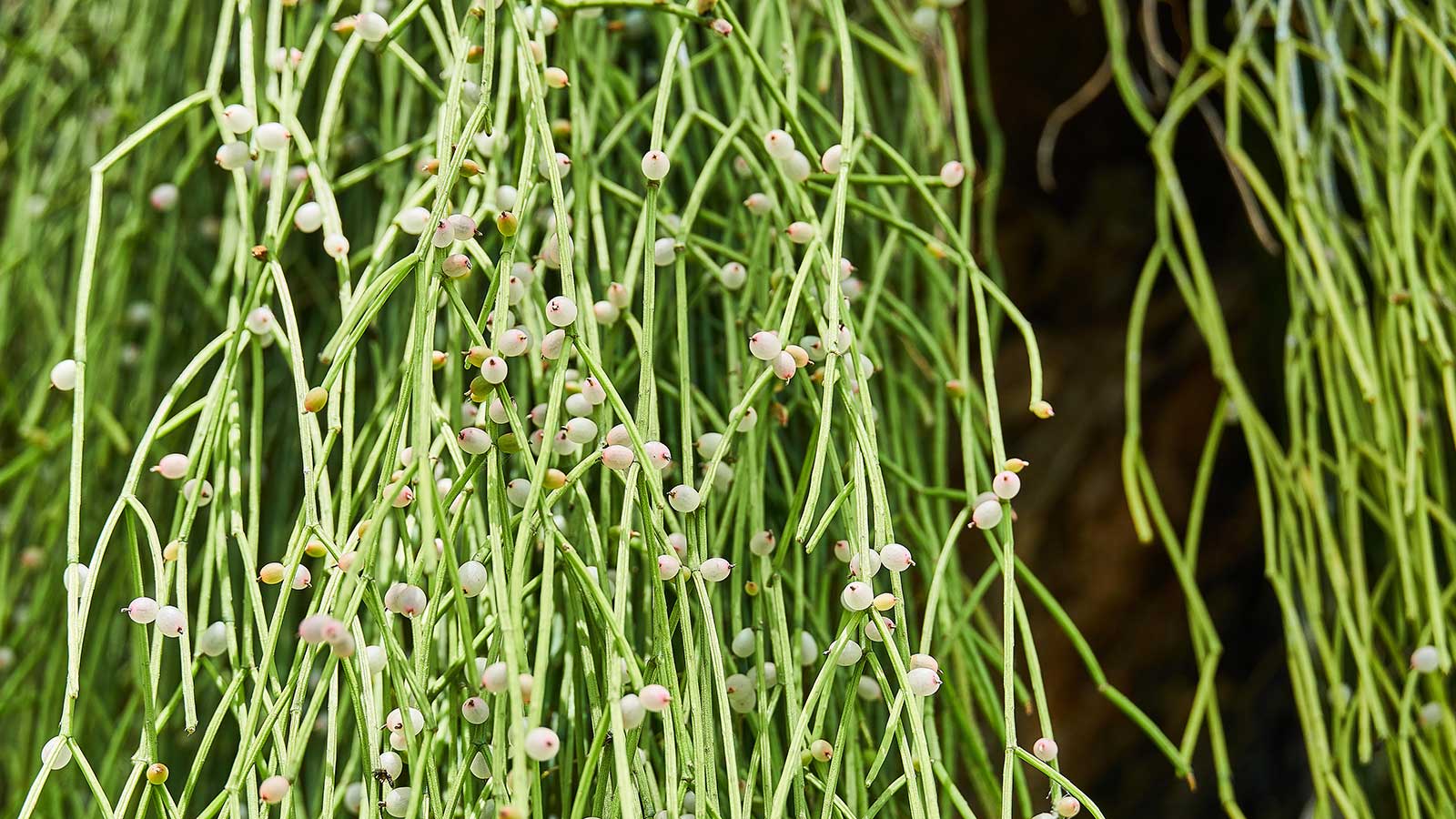
The mistletoe cactus, otherwise known as Rhipsalis baccifera, is an attractive type of succulent. And, although originally hailing from tropical climes, it's well-suited for growing as a houseplant.
Placing these indoor plants up high will show off their elegant, trailing foliage. With the right growing conditions, they can also produce delicate white blooms in spring, followed by pearly berries.
What's more, mistletoe cacti are an easy houseplant to look after, making them a good choice for beginner plant parents. But there are still a few things you'll need to get right to help them thrive.
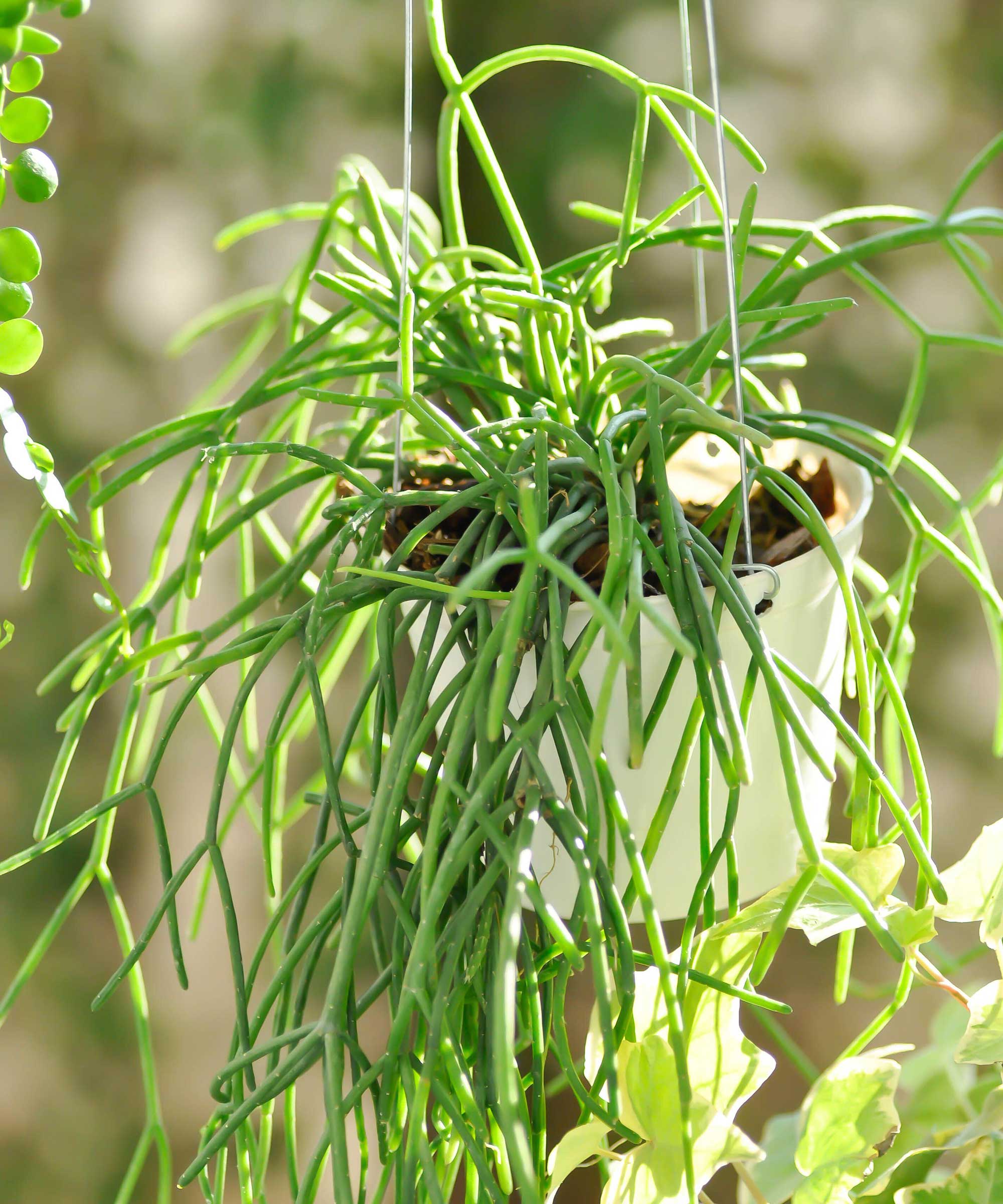
3 tips to keep your mistletoe cactus happy and healthy
This advice will help you provide proper care for these trailing houseplants.
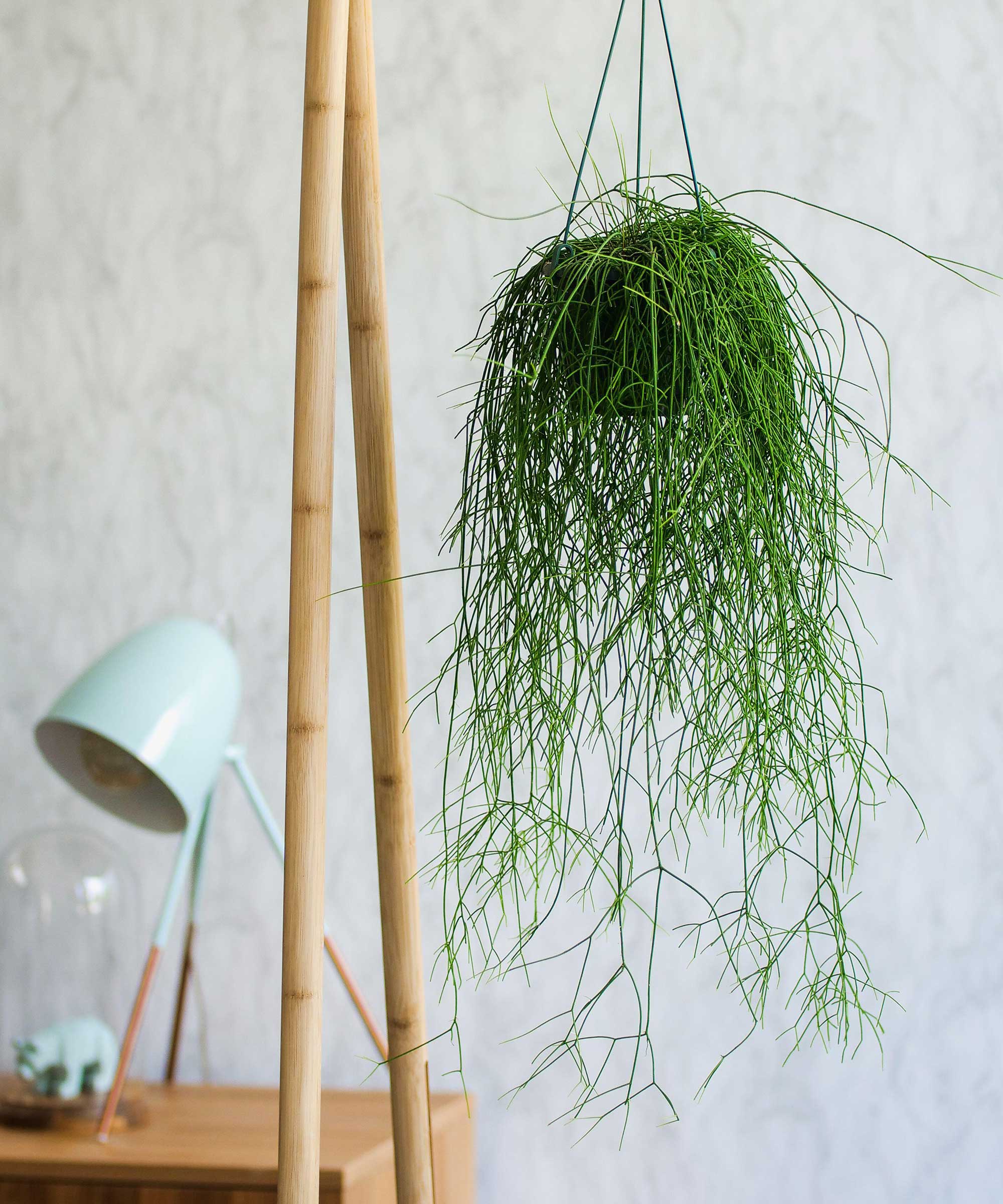
1. Provide the correct amount of moisture
Unlike desert cacti, the mistletoe cactus requires more frequent watering, says Kayla Gajdascz of Mental Houseplants.
'Water when the top inch of soil feels dry. Ensure the pot has good drainage to prevent water from sitting at the bottom, as this can lead to root rot,' she adds. 'During the winter months, reduce watering as the plant goes into a dormant phase.
'Being a tropical plant, Rhipsalis baccifera enjoys higher humidity,' Kayla continues. 'If your home is dry, especially in winter, consider using a humidifier or placing the plant on a pebble tray with water.'
This 3-liter humidifier from Levoit at Amazon is well-rated.
Paris Lalicata of The Sill suggests using a standard indoor potting mix that is well-draining. While you can use a cacti-specific soil for the plant, they usually don't have a lot of nutrients or retain moisture for long periods, she says. 'Therefore, you may see yourself watering a bit more frequently, as well as needing to fertilize periodically.'
Top tip: 'Do not fertilize in the winter when the plant's growth slows down,' Kayla says.
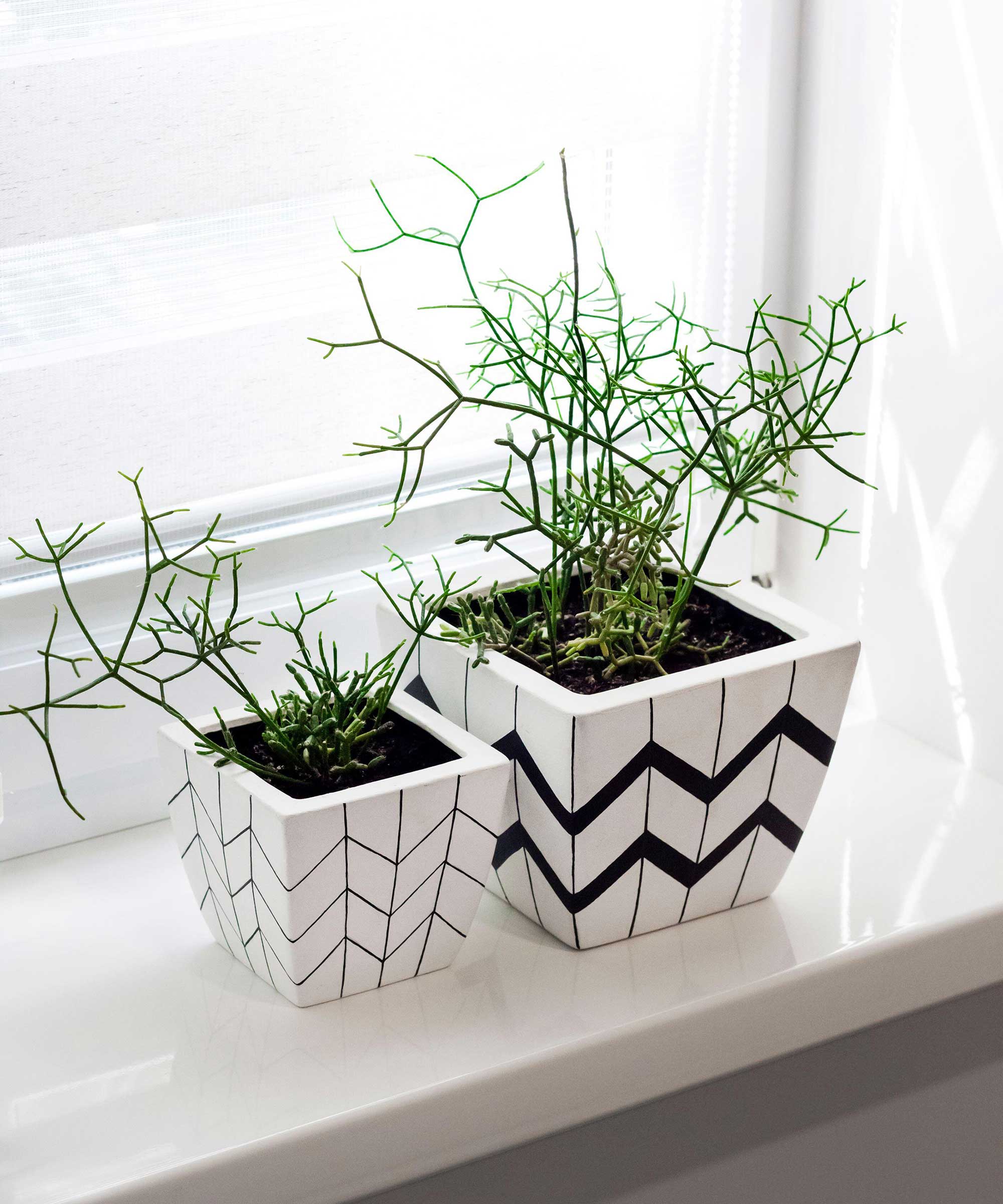
2. Get the lighting right
'Rhipsalis baccifera prefers bright, indirect light,' says Kayla. 'Direct sunlight can be too harsh and cause the plant to scorch, especially during the hotter parts of the day.' On the other hand, leggy growth or a pale coloration can indicate insufficient light, she adds.
Paris suggests putting it in an east-facing window, as the morning direct sun won't be too strong for it.
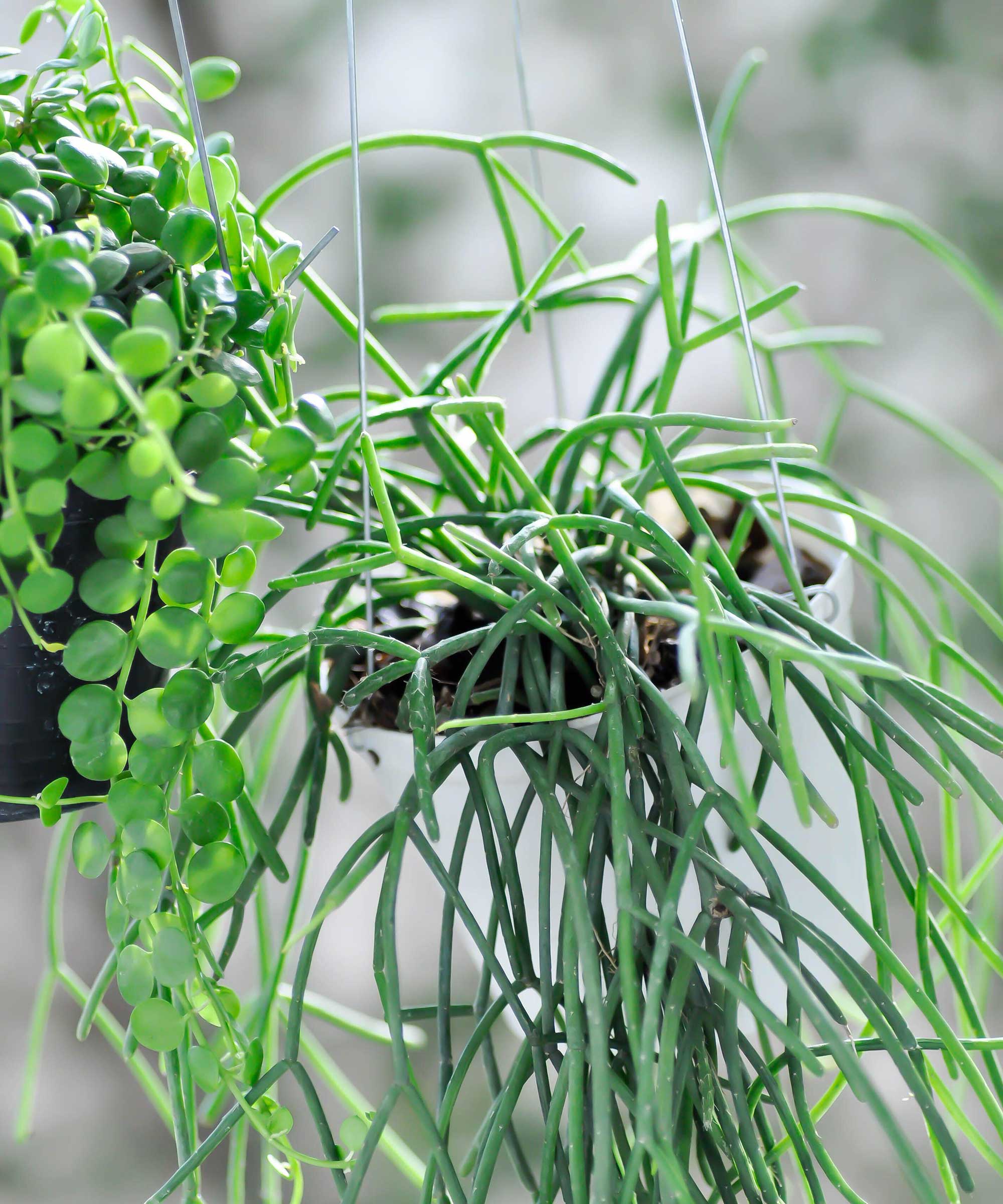
3. Repot your mistletoe cactus when needed
'Repot your mistletoe cactus every two to three years, or when it outgrows its pot,' says Kayla.
'Choose a pot that is about 1-2 inches larger than its current pot and ensure it has good drainage holes. Repotting is best done in the spring or early summer to induce less stress on the plant.'
Top tip: All indoor plants will benefit from repotting when the time is right, from jade plants to monsteras.
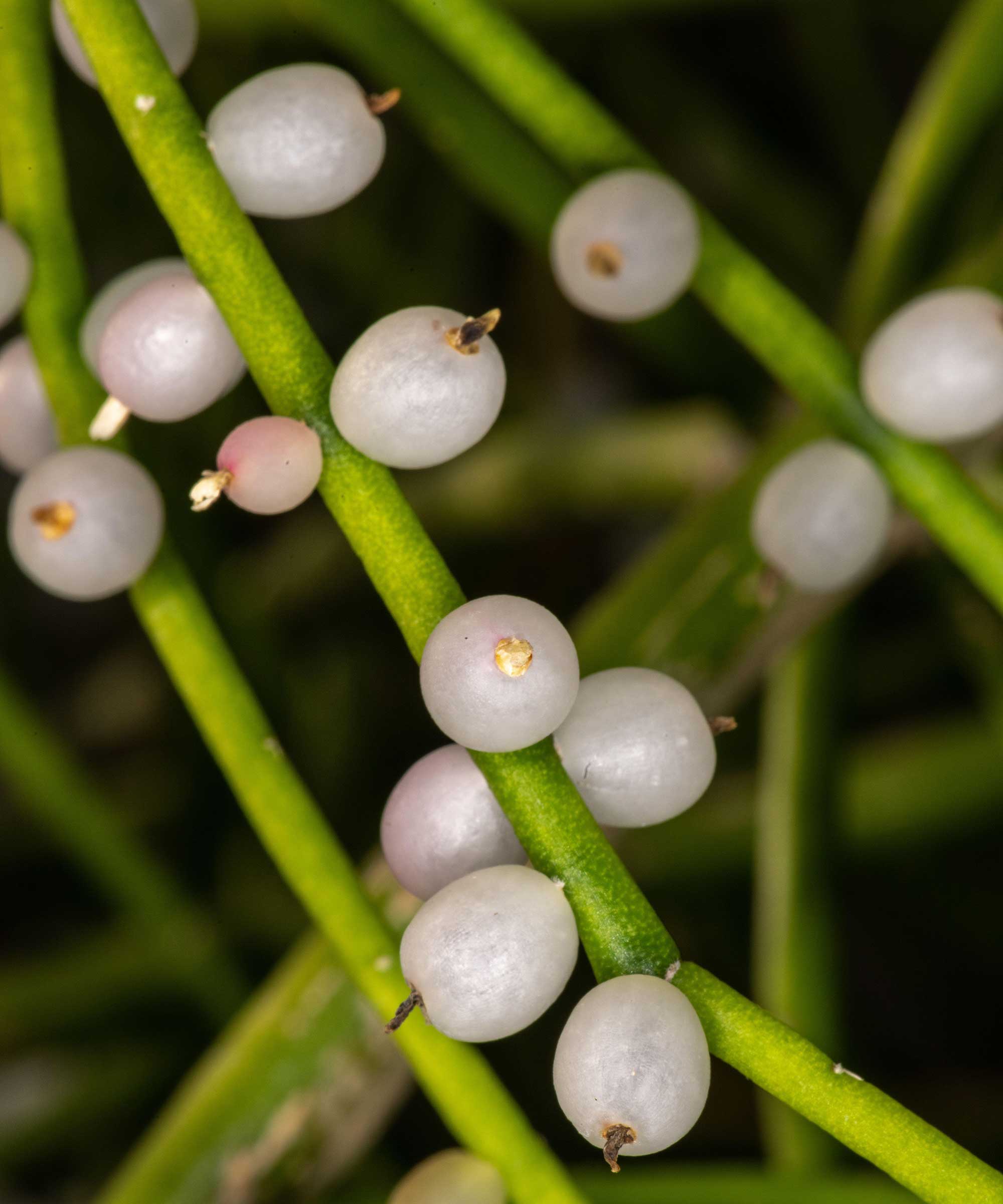
FAQs
What are some common problems when growing mistletoe cacti?
'As long as you provide the proper environment and care, this plant doesn't really have many issues and is very easy to care for,' says Paris Lalicata from The Sill. However, if it doesn't get enough light, or you leave the soil dry for too long, leaf drop and browning can occur, she warns. 'The plant will also rot if it's overwatered.'
Keep an eye out for common houseplant pests, too, Kayla highlights. These include aphids, spider mites, and mealybugs. 'Treat infestations promptly with insecticidal soap or neem oil,' she suggests.
How can you propagate mistletoe cactuses?
You can propagate these succulents by taking plant cuttings. Once you've removed the sections of stem, leave them somewhere dry for a day or so to allow the cut ends to form callouses. Then, plant the cut ends into small pots of moistened, well-draining potting soil. In time, they should develop roots.
The mistletoe cactus is a less familiar houseplant to some, but if you can find one, it makes a great addition to the home. And, if you're looking for more low-maintenance plants to include in your collection, consider pothos, spider plants, and peace lilies, too.






